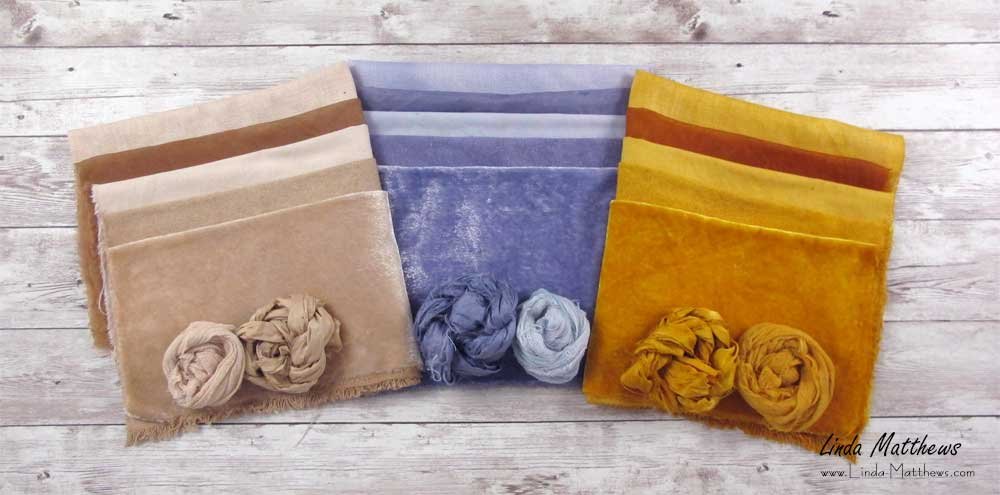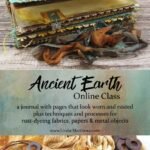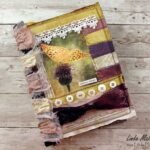
In this year’s series of online journaling classes, I’m including with each session a workshop on natural dyeing which is a simple and easy method of making hand-dyed fabrics and fibers that we can use in our stitched journals.
In the last workshop, I included the process for natural dyeing with fruit teabags which was fun and easy and produced a beautiful range of softly colored fabrics. I used those fabrics in my Transitions Journal. In the next workshop which will be available 1st January 2020, I’ll be sharing the process for natural dyeing using fruit and vegetables.

If you’ve never tried natural dyeing before, it’s a fun and easy process often with unexpected results. It’s hard to believe that the above sets of fabric were dyed with color extracted from avocados, red cabbage, and yellow onions – such lovely colors! And it gets even better because different types of fabrics will produce different shades of the color so you end up with a lovely collection that are similar in color but not the same.
The process for extracting color from fruit and vegetables is very easy. Depending on the fruit or vegetable, you can use the whole thing or just the skin and/or pits. For example with onions you only need to use the outer skins, with avocados you can use the skins and pits, and with cabbage you can use the whole thing chopped up. The more you use, the stronger the color.
Once you have the fruit or vegetables prepared, simply simmer on the stove in a large pot with plenty of water for about an hour or two. Then pop your fabric in, simmer for another hour or so, then let everything cool down for several hours or overnight. Natural dyeing is very experimental, so you’ll achieve a different depth of color depending on how much fruit and vegetable you use and how long you leave things sit to cool down.
Natural dyeing works best with natural fibers such as cotton, silk, hemp, linen and wool. Fabrics absorb the dye better when they have been scoured (washed) to remove all impurities and chemicals, and should be washed using a mild detergent with no additives. I use pfd (prepared for dye) fabrics, so there’s no need for a prewash.
For fabrics you plan to wash after they have been dyed, you should pre-treat the fabric with some sort of mordant to fix the color so it doesn’t run. There are lots of different types of mordants that you can use in natural dyeing, however I use alum which is a general purpose mordant that works well for most fabrics.
If you’d like to learn more about natural dyeing, as well as other creative techniques and processes for making handmade journals and artist books, join me for this series of creative online journaling classes which is an exciting year of artful journal-making using creative mixed media techniques as well as processes for learning to tell our stories in a completely unique way. You can find all the details here.
Natural dyeing using yellow onion skins

Natural dyeing using chopped up red cabbage

Natural dyeing using avocado skins and pits





